I'm using a Micrel KSZ8051 Phy in a 100mbps design. The datasheet specifies that it should have a small ferrite bead feeding the power.

However, the datasheet doesn't suggest any specifications for the ferrite. What should I consider when choosing a ferrite? Do I simply select the component with the highest impedance at 100MHz which can take the current?